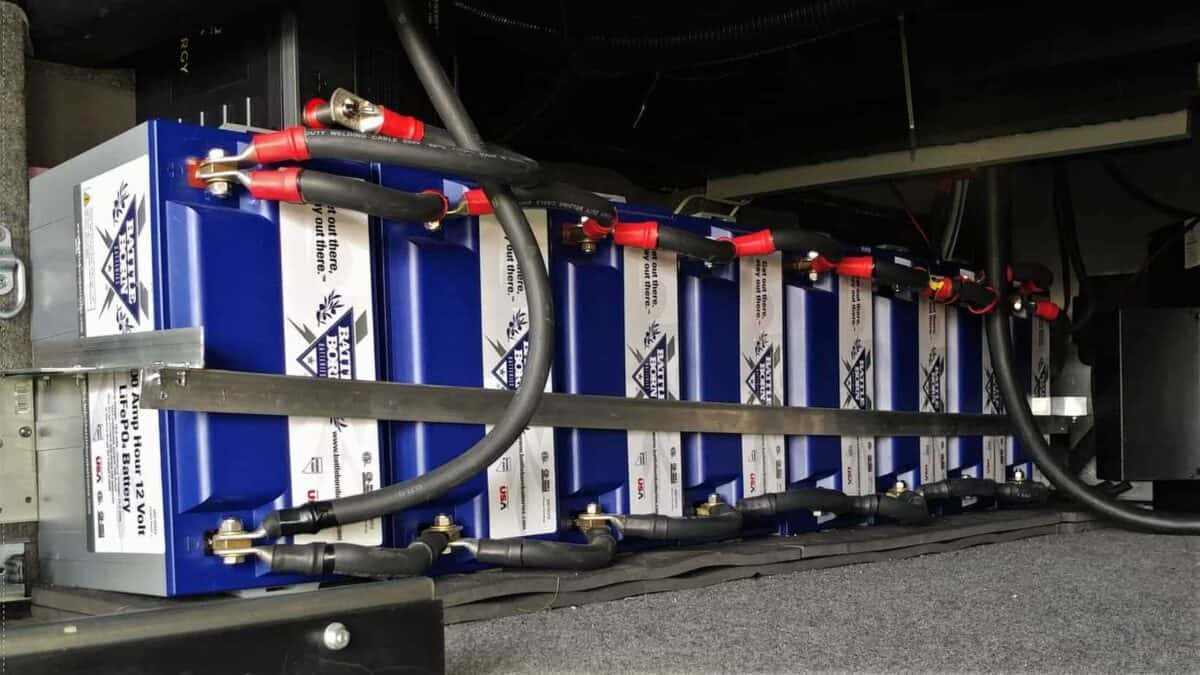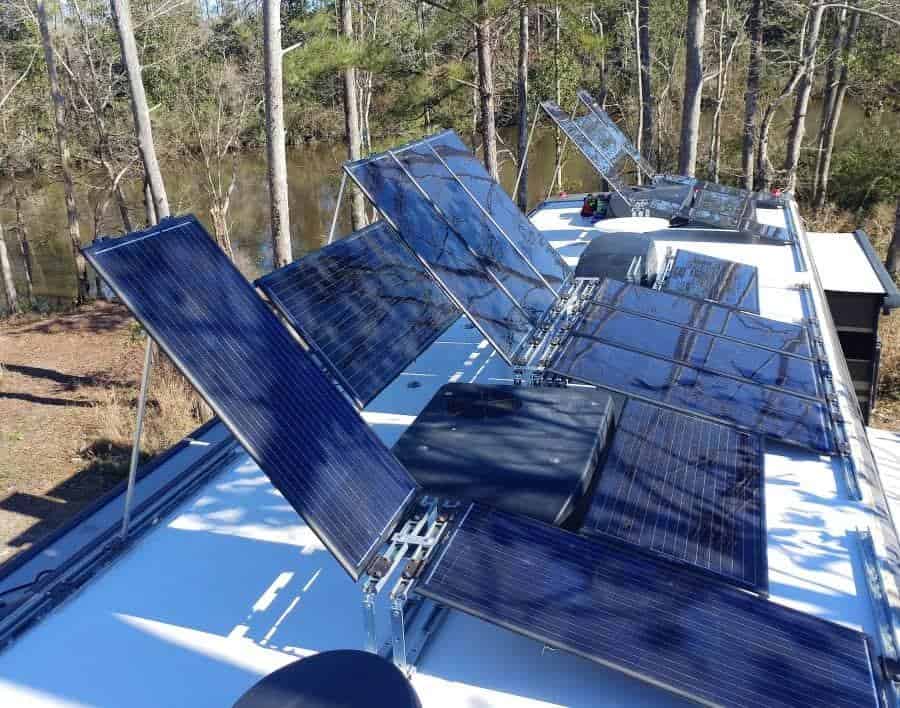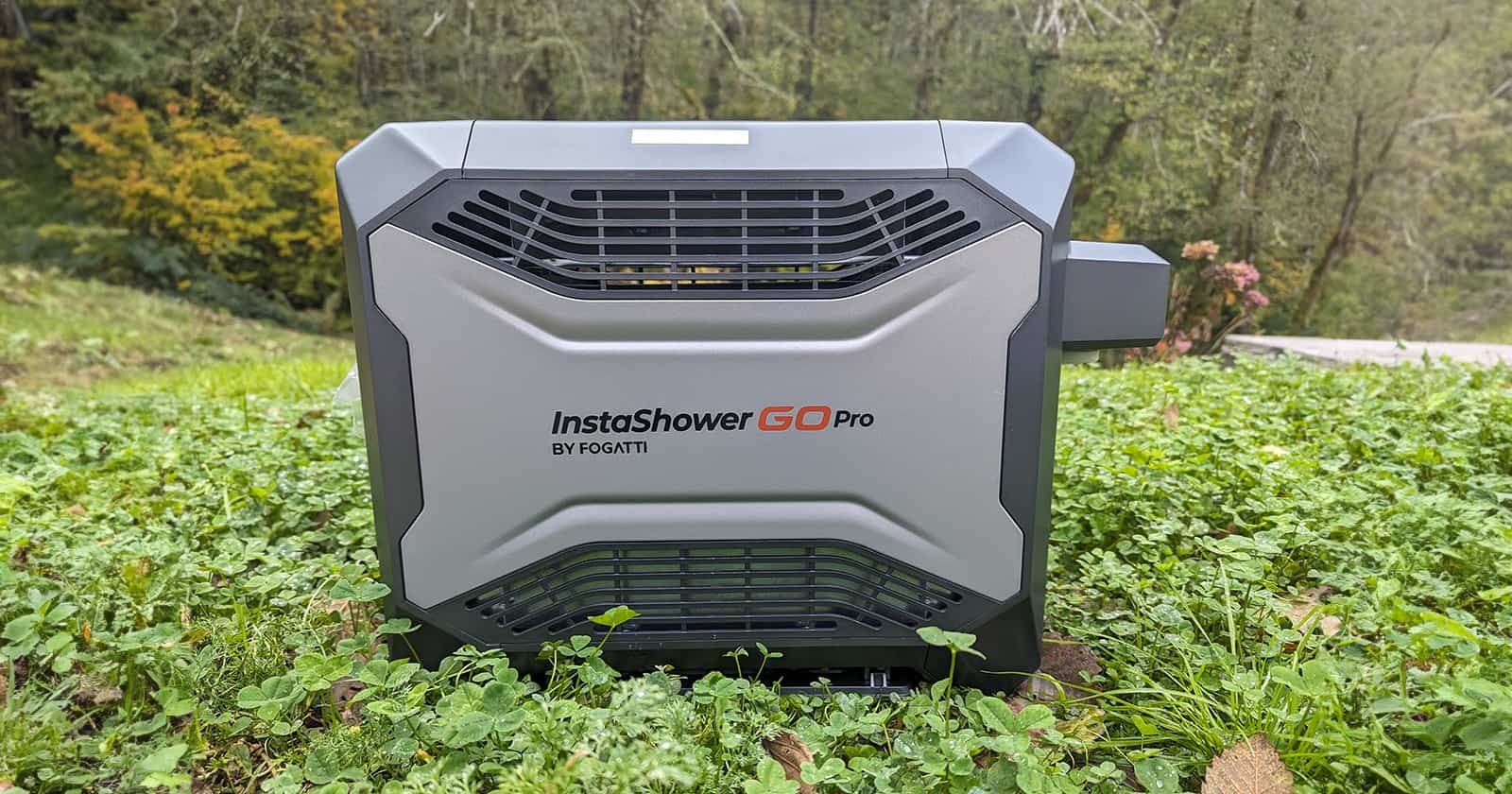A Simple Guide to Understanding How RV Solar Works
How does RV solar work? An RV solar electric system is essentially a battery charger that operates using solar energy. As a full-time RVer, I have successfully installed solar electric systems on two separate RVs that continue to operate flawlessly. In addition, I have evaluated numerous RV solar electric systems, and the majority have proven to be functional. However, those that did not function were typically factory-installed and insufficiently sized except to maintain a battery charge during the RV’s storage period.
Here’s How RV Solar Works
Put simply, an RV solar electric system is just a battery charger that runs on sunshine. I hate it, though, when I hear a salesman tell someone that a solar panel turns sunlight into electricity. It is not true! Sunlight does not turn into electricity. Instead, the energy from sunlight (in the form of photons) excites electrons in the photovoltaic cells of the solar panel. If you want to know how a solar panel creates electricity, here is an article about that subject.
RV solar’s role is often made to sound more complicated than it is. When designed properly, it excels as a battery charger. However, if not designed for its intended use, it will not perform well. Fortunately, installing an RV solar panel array is straightforward. The main challenge is finding a way to run the wires from the roof of the RV to the battery compartment. In addition, a weather-tight location is required for the solar controller. By following a few simple steps, excellent results can be achieved.
The Purpose of Solar is to Recharge Batteries
It’s important to remember that a solar electrical system in an RV is primarily used to recharge the battery bank. I utilize the stored energy in my battery to power my RV components. When it’s time to recharge, I have two options: I can either use my solar array or connect my RV to an external power source, such as a generator or a power outlet.
You Will Need Batteries To Store the Power
As you might have guessed, you need batteries for RV solar panels to charge. Sometimes the batteries you have will be all you need. If you don’t ever camp without electrical hookups, you probably don’t need solar, but you need a big enough battery to move from one location to another. For Many RVs, the lights and other 12V appliances run from the battery even if it’s plugged in all the time. Since a battery is necessary, the question is, should you use lead-acid batteries or get lithium batteries? This article compares the two different battery types.
What kind of batteries do you need?

I dry camped for two years on lead-acid batteries both with and without solar charging. It is difficult, but you can do it. Now that I have lithium batteries, I won’t be going back. Unlike lead-acid batteries, lithium batteries do not resist being charged. Lithium batteries make solar operate much better than could ever be achieved using lead-acid batteries. This article describes how lithium batteries act when being recharged.
Should You Get RV Batteries First or RV Solar Panels First?
I have done it both ways. Now I advise that if you are going to get lithium batteries, you do this first before installing solar. You may discover that a battery upgrade is all you need.
How to Charge the Batteries With RV Solar Panels
Lead-acid batteries need to go through stages before they are full. The last stage (float) takes as much time as the first two stages. Many people think that they are done charging when they get to the float charging stage. They are far from done, and if you stop at this point you will eventually damage lead-acid batteries. Here is the link to an article about living with lead-acid batteries without solar.
Using solar power, we can fully charge our lithium batteries by day’s end. For nearly a year, we relied on our generator to recharge our lithium batteries without solar. Unlike lead-acid batteries, lithium batteries do not require a full recharge every time. Without solar power, we came to appreciate how effortless it was to recharge our lithium batteries and how unnecessary it was to achieve a complete daily recharge. You can learn more about recharging lithium batteries here.
How Many Solar Panels Does My RV Need?
Sorry, but this is simply the wrong question to ask. Here is the correct question. How many solar panels do you need to replace the energy you consumed? Size your batteries to store all the electricity you need for at least an overnight period, and then size your solar array to replace the electricity you used.
You can expect each unshaded 100-watt solar panel, pointed towards the sun, to produce about 500 watts of electricity on each sunny day. You will get more in the summer and not quite as much in the winter because the days in the winter are shorter and the sun angle is lower. If you minimize the size of either the solar array or the battery storage you will need a backup plan to recharge the batteries.

I sized my battery bank to achieve two and a half days without charging and my solar to replace all the energy used in one night by noon the next day. Here is a link to an article about my own solar installation.
How Do You Monitor the Charge Level of Your RV Batteries?
The only good way to monitor the charge level of a battery is to measure the amperage that flowed out of the battery and monitor the amperage that flows into the battery. Any other method is guessing. On lead-acid batteries, you could measure the voltage after the battery is turned off for a few hours. If you measure battery voltage when they are being charged, you measure the charging voltage, not the battery charge level. Measuring the voltage on a lithium battery will not tell you the state of charge.
What Kind of Solar Panels do I Need for my RV?
While RV roof space can be challenging due to various obstructions, a rectangular solar array may not always be feasible due to potential shade issues. When installing solar panels in an array, it’s critical to ensure that each panel is exposed to the open sky and not shaded by any roof items. While larger panels may be suitable for some, I opted for smaller 100-watt panels to work around the obstructions on my roof. For my array, I selected eighteen 100-watt panels to avoid electrical mismatches between different sizes. Check out this article for more details on my solar array.
Given the limited space available on an RV roof, high-efficiency solar panels are essential. As of now, mono-crystalline panels offer the highest efficiency. I installed enough of them to power even my air conditioner. For a detailed account of how I managed to run my air conditioner on solar power, including technical specifications, check out this story.
“If you’re looking to run your air conditioning unit off of solar or smaller generator, you may find that your unit struggles to start up due to the power limitations of these systems. That’s why it’s important to invest in a soft starter, like the SoftStartRV. This device reduces the amount of power needed to start your air conditioning unit, allowing it to run smoothly and efficiently.” – Levi Henley
You Must Have a Charge Controller for your RV Solar Panels
It’s crucial to note that directly attaching solar panels to your batteries is not advisable, as the panels can generate more electricity than your batteries can handle and end up damaging them. To prevent this, it’s essential to use a charge controller that regulates the voltage and stops charging the battery once it’s full. Keep in mind that charge controllers for lithium batteries and lead-acid batteries require different settings. For more information on how I set up and wired my solar array, check out this article.
My charge controller takes up to 100 volts from the solar array and turns this into 14.4 volts, and connects this to my lithium batteries. My charge controller has a limit of 50 amps per hour. Since I have two identical charge controllers, together I can recharge from solar alone at 100 amps per hour. A bigger charge controller may work at higher voltages and higher amperages. My two charge controllers are one for the passenger-side solar array and the other for the driver’s side solar array. Both are equal. Both, however, do not usually create the same power output because of panel orientation.
Can I Use a Solar Generator?
A “solar generator” is an all-in-one solution that includes a solar charge controller, lithium battery, and an inverter to change the stored direct current into alternating current. I don’t use one because my system is large, and I haven’t seen a solar generator that is as big as I would want. Still, I have all the functions of a solar generator, but I use separate components. If your needs are smaller than mine then you could use a solar generator. It might be a simple solution for you. You would need solar panels, wires, and a solar generator. Here is a link to a solar generator that I think is one of the best I have found.
The Lion Energy Safari ME has a 922-watt (hour) battery. This battery is about 3/4 the size of one of my batteries. It also includes a 585 maximum-watt solar controller. The charge controller has a limit of 30 amps per hour. The solar generator includes a 2000-watt inverter with a maximum momentary surge power of up to 4000 watts. If the battery capacity is not sufficient, Lion has an expansion pack that will triple the battery storage. Again, I don’t have one, and I am only relating the specifications. I have Lion Energy UT-1300 Batteries that are working perfectly. Here is an article that shows how I used one Lion Energy UT-1300 lithium battery to replace 4 heavy lead acid batteries.
Conclusion
How an RV solar panel system works can be easily understood if you first recognize that solar is basically a battery charger. The next question might be how well does RV solar work? For me, this answer is that my RV solar works great. It is a set-it-and-forget-it system. I haven’t had any issues with any part of my RV solar electrical system or my battery bank. It just works and continues to work to provide nearly all the electricity we need while camping without electrical hookups.




